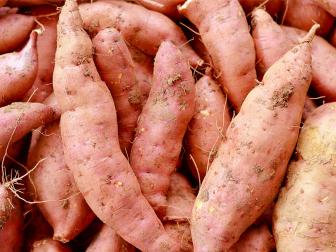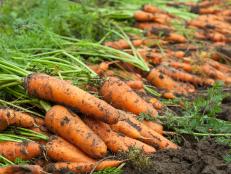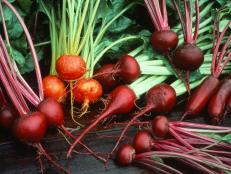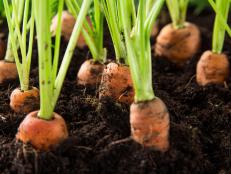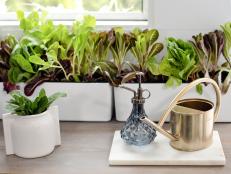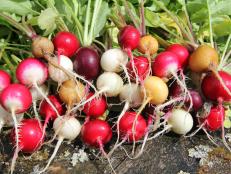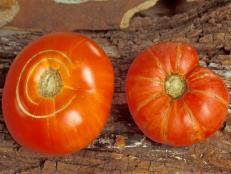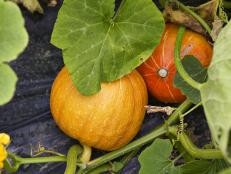What's the Difference Between a Yam and a Sweet Potato?
These two veggies are often called the same thing or misidentified. Find out how to tell the difference between the two, and get tips on how to grow these tasty tubers.

They are similar in shape, size and taste, but there are many differences between yams and sweet potatoes. To make it easy on us, the US Department of Agriculture requires that all sweet potatoes and yams be labeled accordingly. However, that doesn't totally quash the confusion because there is a variety of sweet potato that is called "white yam." Here's some info on both to help you distinguish between the two.
Origins
Sweet potatoes are native to Central and South America and are now commercially grown in the Southern US and California. Yams are native to Africa and Asia and are still mainly grown there and in parts of the Caribbean and South America. Yams are not grown commercially in the US, so that's why they're not as common as sweet potatoes.
Sweet potatoes are part of the morning glory family, so they grow like typical tubers, underground with trailing vines above ground. Yams grow more like ornamental grasses and lilies, so they’re a root of a flowering plant. (Plant biology 101: Sweet potatoes are dicots and yams are monocots.)
Sweet Potatoes

Sweet Potatoes
Sweet potatoes come in a variety of colors, but it is the orange-flesh variety that is most popular in the US and Canada. Sweet potatoes are grown from slips, which are root sprouts. Choose slips that are certified “disease-free,” to avoid introducing fungal diseases or pests like sweet potato weevils. Both are very hard to eliminate once they get started.
How to Plant and Grow Sweet Potatoes
Sweet potatoes come in two forms: vining and bush varieties. Both types thrive in the hot summer sun and are relatively easy to grow if given the right spacing and soil.
Plant the slips up to their top leaves, about 6” deep and 12” apart. Give them a spot in full sun with well-drained soil and mix lots of good compost into the bed. If your soil is heavy clay, try raised beds amended with compost and sand. You can also grow sweet potatoes in large containers, letting the vines run or trellising them. Bush varieties of sweet potatoes are available if you’re growing space is small.
Yams
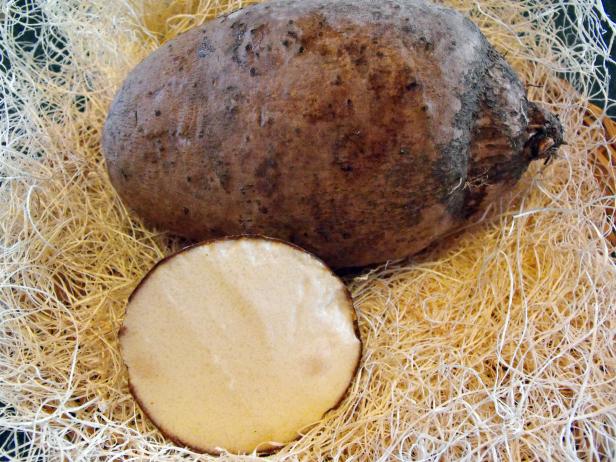
Yam Dioscorea
Yams have a rough, scaly skin that looks like tree bark and is harder to peel than sweet potatoes. The skin is typically brown with the flesh being white. Some varieties can grow beyond the typical tuber size, up to several feet long and a couple of hundred pounds (surely a sight to see at the county fair).
There are eight different species of yams and all can be found for sale in different parts of the US, but the Chinese Yam (Dioscoreaopposita) is the most widely distributed. Markets specializing in Asian and Latin groceries are more likely to sell yams, and because they can grow quite large, the may already be pre-cut.
When cooked, sweet potatoes have a similar texture to regular potatoes. Yams are starchier and drier than sweet potatoes, and the taste is sweeter. Yams are loaded with potassium while sweet potatoes are packed with vitamin A.
Storage requirements for sweet potatoes and yams are pretty much the same. Both will keep for about 10 days at room temperature. If you have a root cellar that stays about 55 to 60 degrees Fahrenheit, they'll keep for about a month. Raw yams and sweet potatoes should never be stored in the refrigerator, ideal conditions for both are a dry, cool but ventilated area. Cut sweet potatoes or yams should be prepared within 24 hours, and prepared dishes can be kept frozen for several months.






